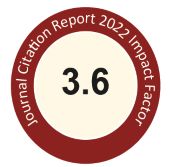Abstract
Ji-Ming-Shan (JMS) is a traditional prescription use for patients with rheumatism, tendons swelling, athlete's foot, diuresis and even gout. This study developed a rapid and sensitive method for the analysis of JMS chemical components in the Traditional Chinese medicine (TCM) prescription and in the serum samples of rats which were administered with the herbal extract. Two mass spectrometric approaches were used namely Ultra-performance liquid chromatographyquadrupole time-of-flight-mass spectrometry (UPLC-Q-TOF-MS) method for the major metabolites of the JMS extract while Ultra-performance liquid chromatography-tandem mass spectrometry (UPLC-MS/MS) was employed for the detection of the JMS metabolites in the sera of rats. It was revealed that the major components in the JMS extract were identified to be narirutin and hesperidin. It was confirmed that 17 compounds were determined in JMS prescription extract and 16 metabolites resulting from the biotransformation of narirutin and hesperidin were identified in the serum samples. In silico analyses also revealed that the metabolite hersperidin-7-glucoside exhibited the best binding ability with respect to the Cyclooxygenase-2 (COX-2) enzyme target. This study showcased the possible biochemical mechanism involved in the therapeutic efficiency of JMS components and their biotransformation products.
Recommended Citation
Hsieh, Cheng-Yang; Wang, Ching-Chiung; Tayo, Lemmuel L.; Tsai, Po-Wei; and Lee, Chia-Jung
(2023)
"Identification for metabolism profiles and pharmacokinetic studies of tradition Chinese prescription Ji-Ming-San and its major metabolites in rats by UHPLC-Q-TOF-MS/MS and UHPLC-MS/MS,"
Journal of Food and Drug Analysis: Vol. 31
:
Iss.
3
, Article 9.
Available at: https://doi.org/10.38212/2224-6614.3473
Creative Commons License

This work is licensed under a Creative Commons Attribution-Noncommercial-No Derivative Works 4.0 License.
Included in
Food Science Commons, Medicinal Chemistry and Pharmaceutics Commons, Pharmacology Commons, Toxicology Commons


Abstract Image